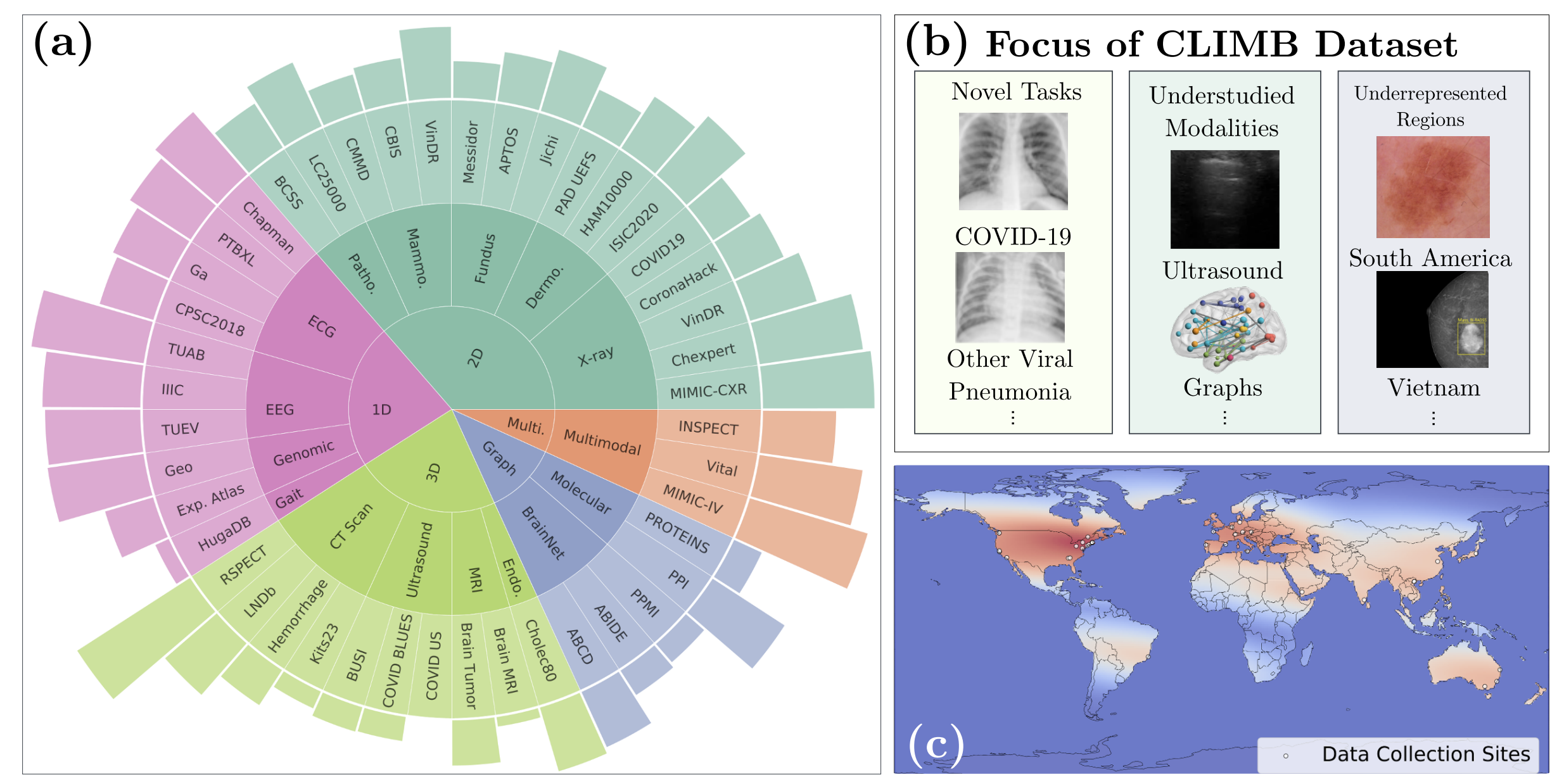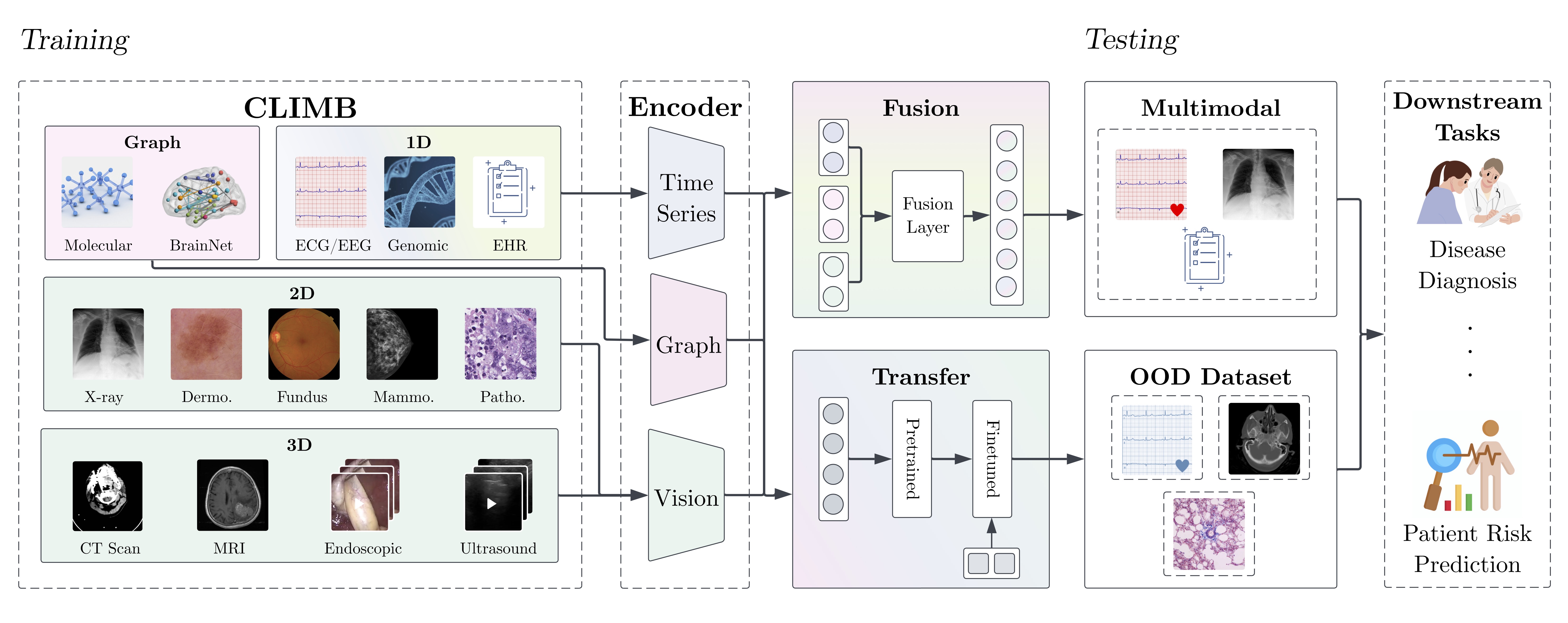CLIMB is a comprehensive multimodal clinical benchmark that unifies diverse medical data across imaging, language, temporal, and genomic modalities. This framework enables holistic assessment of patient health by leveraging multiple data types and demonstrating significant improvements in clinical task performance.
This dataset framework is built on top of the BenchMD repo, with redesigned datasets and models from EEG, pathology, mammography, X-ray, and other clinical domains.
We also built a downloader framework so that you can download datasets with gated access easily. The downloader framework currently supports all datasets on PhysioNet, Github and Kaggle, with more to come.
CLIMB comprises:
- 4.51 million patient samples
- 19.01 terabytes of total data
- Data from 33 medical institutions
- 96 different clinical conditions
- 13 clinical domains
A list of the datasets included in CLIMB can be found in the Dataset Info.
The easiest way to download datasets is using the download.py script:
# Download all supported datasets
python download.py /path/to/datasets
# Download specific datasets
python download.py /path/to/datasets --datasets mimic_cxr vindr_cxr busiCreate an object of the corresponding dataset class. An example is shown below.
d = BinaryBrainTumorDataset(base_root='data', download=True)
If we run this code from the root directory, the dataset will be downloaded to the 'data' directory.
Each dataset will be in its own directory, and the dataset directories are categorized by modality.
For example, Brain Tumor 2 will be downloaded to data/mri/brain_tumor_2.
For more download options (including selective file downloads), please refer to the Download Instructions.
- 40.56% - 3D/Video samples (ultrasounds, CT scans, endoscopic images, MRI images)
- 22.90% - Multimodal data combinations
- 19.31% - 1D data (EHR, EEG, ECG, gait and genomic data)
- 15.68% - 2D imaging data (X-rays, dermoscopy, fundus images, pathology slides)
- 1.54% - Graph data (brain networks, molecules)
fusion: Code for multimodal fusion strategiesmodels: Vision, EEG, and ECG encoderssrc: Dataset collection and preprocessing scripts

